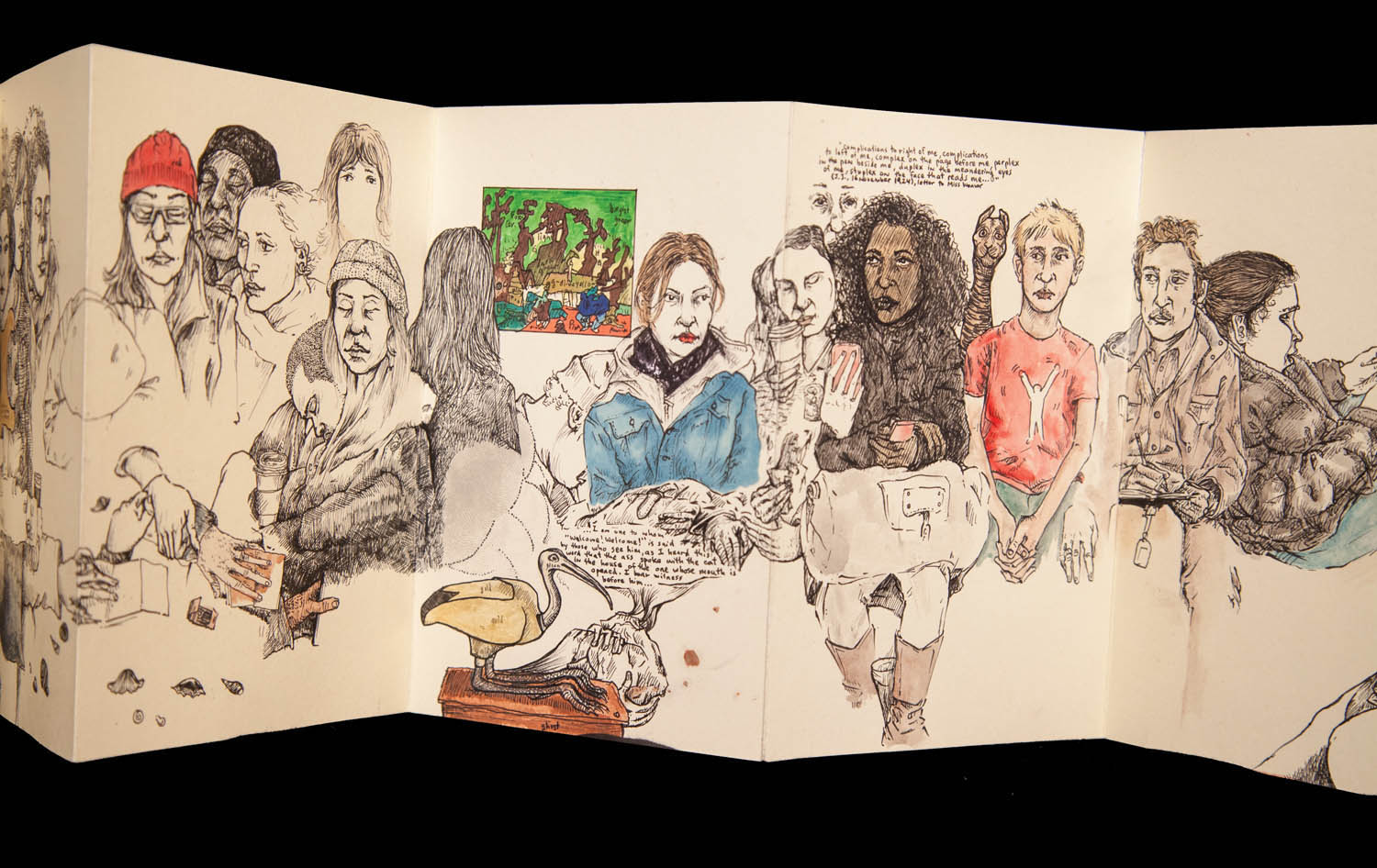I have a couple of Moleskine’s Japanese Albums, but I’ve never actually used one. The elongated spread of pages always seems daunting to me, but I love to see the way other artists take advantage of this format. American illustrator Chris Russell is one of the best I’ve seen. Large narrative paintings by seventeenth century Buddhist monks in China were the inspiration for his amazing multi-year project documenting a very different landscape: his morning commute.
[Russell’s] project of the last nine years [is] a series of figurative ink drawings that unfold across pocket-sized accordion notebooks, each measuring five and a half inches tall and more than one hundred and eight inches long when fully extended. He now has nine such notebooks, which merge into a seamless stream of interlocking images when placed end to end. Once, Russell found a particularly long hallway and laid out all the notebooks across the floor. The work in progress stretched over eighty-one feet. “It was a little overwhelming,†he says.
Russell refers to his work as an “endless landscape†in a nod to the late Ming / early Qing compositions, particularly the masterful, elegiac work of Shitao, Kuncan, and Xiao Yuncong. When you relax your gaze, Russell’s images take on the flowing topographical patterns of the paintings they’re modeled after: clusters of form that rise into peaks between swathes of blank space suggesting clouds or sky or rising mist. On closer look, Russell’s drawings resolve into intimately detailed portraits of the strangers who sit opposite him during his daily commute across New York City. They evoke not only the form but the feeling of the Chinese landscape paintings, that melancholic sensibility. “Portraiture is inherently melancholic,†he says. “It’s about trying to hold onto something that you know is gone already, or that you know is about to be gone.â€


Please read the whole article at VQR, there is lots more great background about Russell’s inspirations and methods: The Humanity Notebooks

What a cool project!